
The Fisher Building is a landmark skyscraper located at 3011 West Grand Boulevard in the heart of the New Center area of Detroit, Michigan. The ornate 30-story building, completed in 1928, is one of the major works of architect Albert Kahn, and is designed in an Art Deco style, faced with limestone, granite, and several types of marble. The Fisher family financed the building with proceeds from the sale of Fisher Body to General Motors. It was designed to house office and retail space.

The Fox Theatre is a performing arts center located at 2211 Woodward Avenue in Downtown Detroit, Michigan, near the Grand Circus Park Historic District. Opened in 1928 as a flagship movie palace in the Fox Theatres chain, it was at over 5,000 seats the largest theater in the city. Designed by theater architect C. Howard Crane, it was listed on the National Register of Historic Places in 1985.

The Fox Tower is a 27-story, 113.39 m (372.0 ft) office skyscraper in downtown Portland, Oregon, along Broadway between Yamhill and Morrison streets. The tower was completed in 2000 at a cost of $64 million, and was named after the Fox Theatre that occupied the site from 1911 until the late 1990s. TVA Architects designed the building and Tom Moyer developed the property.
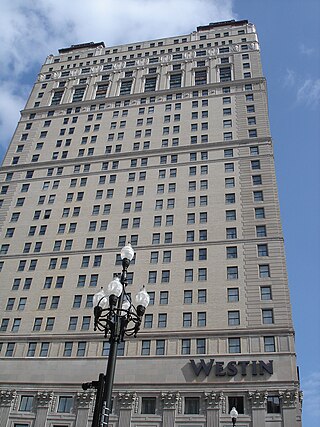
The Westin Book Cadillac Detroit is a historic skyscraper hotel in Downtown Detroit, Michigan, within the Washington Boulevard Historic District. Designed in the Neo-Renaissance style, and opened as the Book-Cadillac Hotel in 1924, the 349 ft (106 m), 31-story, 453-room hotel includes 65 exclusive luxury condominiums and penthouses on the top eight floors. It reopened in October 2008, managed by Westin Hotels, after a $200-million restoration.
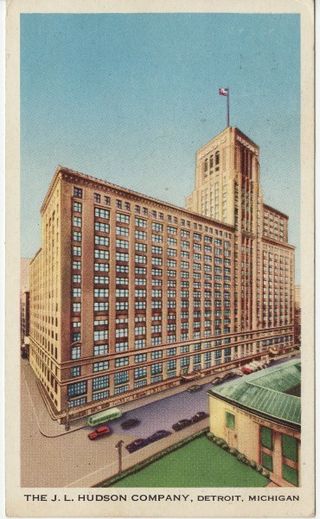
The J. L. Hudson Building ("Hudson's") was a department store located at 1206 Woodward Avenue in downtown Detroit, Michigan. It was constructed beginning in 1911, with additions throughout the years, before being "completed" in 1946, and named after the company's founder, Joseph Lowthian Hudson. Hudson's first building on the site opened in 1891 but was demolished in 1923 for a new structure. It was the flagship store for the Hudson's chain. The building was demolished in a controlled demolition on October 24, 1998, and at the time it was the tallest building ever imploded.

The AT&T Michigan Headquarters is a complex of skyscrapers and buildings located at 1st Street, Cass Avenue, State Street, and Michigan Avenue in Downtown Detroit, Michigan. It contains the AT&T Building, the AT&T Building addition, the Maintenance Shop and is owned by communications giant AT&T.
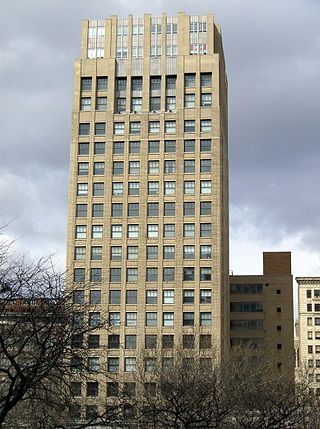
Grand Park Centre, also known as the Michigan Mutual Building, is a high-rise office building in downtown Detroit, Michigan, located at 28 West Adams Avenue, at the corner of Adams Avenue West and Woodward Avenue, standing across from Grand Circus Park in the Foxtown neighbourhood. Nearby buildings and attractions are Grand Circus Park, Comerica Park, Ford Field, the Dime Building, and Campus Martius Park. The building is a part of the Michigan Mutual Liability Company Complex, with the Michigan Mutual Liability Annex. The building is located in the Foxtown neighborhood of Detroit.
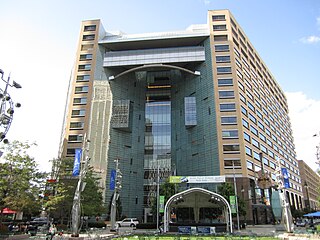
One Campus Martius is a building located in downtown Detroit, Michigan. It began construction in 2000 and was finished in 2003. It has seventeen floors in total, fifteen above-ground, and two below-ground, and has 1,088,000 square feet (100,000 m2) of office space. The high-rise was built as an office building with a restaurant, retail units, space for Compuware and a fitness center, as well as an atrium. The building now has Rocket Mortgage, Microsoft, Meridian Health, Plante Moran and Compuware as its major tenants.
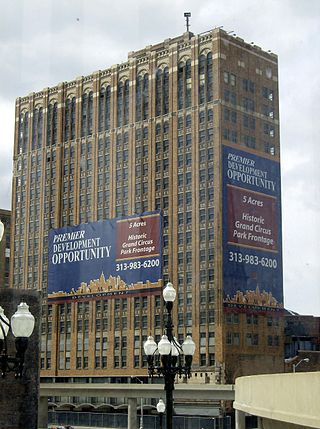
The United Artists Theatre Building is a vacant high-rise tower in downtown Detroit, Michigan, standing at 150 Bagley Avenue. It was built in 1928 and stands 18 stories tall. The building was designed by architect C. Howard Crane in the renaissance revival architectural style, and is made mainly of brick. Until December 29, 1971, it was a first-run movie house and office space, and then after that, the theatre saw sporadic usage until 1973. The United Artists Theatre, designed in a Spanish-Gothic design, sat 2,070 people, and after closing served from 1978 to 1983 as the Detroit Symphony Orchestra's recording theater. After the theater closed, the office block struggled as tenants moved to suburbs. It finally closed in 1984. An original 10-story, vertical UA sign was replaced in the 1950s with a marquee that remained until 2005. The building once shared a lot with the now demolished Hotel Tuller.
The Michigan Mutual Liability Annex is an office building in downtown Detroit, Michigan, located at 25 West Elizabeth Street.

DTE Energy Headquarters is a class-A office complex at I-75 and Grand River on the west side of Downtown Detroit, Michigan. It consists of three buildings: Walker-Cisler Building, General Office Building, and the Service Building.
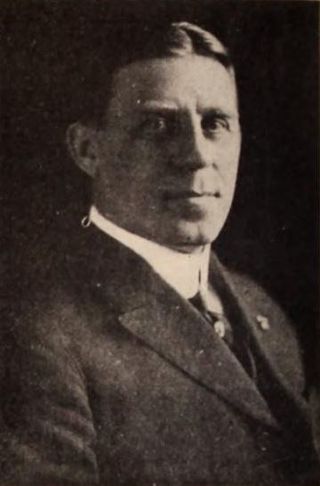
John H. Kunsky (1875–1952) was a Detroit area businessman who made his fortune by investing in movie theaters. He later became partners with George W. Trendle and invested in radio.

The Redford Theatre is an atmospheric theatre in the Old Redford neighborhood of Detroit. The theatre opened in January 1928, advertised as "Detroit's most unique suburban theatre," due to its grand design, featuring Japanese and Chinese motifs.

The Sugar Hill Historic District is a historic district in Detroit, Michigan. It contains 14 structures located along three streets: East Forest, Garfield, and East Canfield, between Woodward Avenue on the west and John R. on the east. The district was listed on the National Register of Historic Places in 2003.

The Monroe Avenue Commercial Buildings, also known as the Monroe Block, is a historic district located along a block-and-a-half stretch at 16-118 Monroe Avenue in Detroit, Michigan, just off Woodward Avenue at the northern end of Campus Martius. The district was designated a Michigan State Historic Site in 1974 and listed on the National Register of Historic Places in 1975. The thirteen original buildings were built between 1852 and 1911 and ranged from two to five stories in height. The National Theatre, built in 1911, is the oldest surviving theatre in Detroit, a part of the city's original theatre district of the late 19th century, and the sole surviving structure from the original Monroe Avenue Commercial Buildings historic period.

The Third Precinct Police Station is a former police station located at 2200 Hunt Street in Detroit, Michigan. The building was listed on the National Register of Historic Places in 1980. It now holds a co-working space, known as "Hunt Street Station."
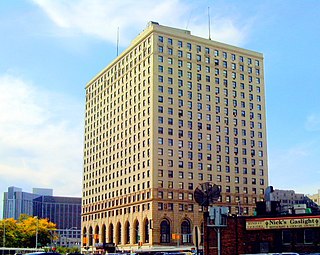
The Detroit-Leland Hotel is a historic hotel located at 400 Bagley Street in Downtown Detroit, Michigan. It is the oldest continuously operating hotel in downtown Detroit, and was listed on the National Register of Historic Places in 2005. The ballroom of the Detroit-Leland has hosted a nightclub, the City Club, since 1983. The hotel is now named The Leland and no longer rents to overnight guests.

The Grand Riviera Theater was a movie palace theater located at 9222 Grand River Avenue in western Detroit, Michigan. It took its name from Grand River Avenue. It was designated a Michigan State Historic Site in 1980, and listed on the National Register of Historic Places in 1982, but was subsequently demolished in June, 1996. The building was removed from the National Register in 2020.

The Kahl Building is an historic building located in Downtown Davenport, Iowa, United States. It was listed on the National Register of Historic Places in 1983. In 2020 it was included as a contributing property in the Davenport Downtown Commercial Historic District. The building also includes the Capitol Theatre.

The Providence Performing Arts Center (PPAC), formerly Loew's State Theatre and Palace Concert Theater, is a multi-use not-for-profit theater located at 220 Weybosset Street in downtown Providence, Rhode Island. It was built in 1928 as a movie palace by the Loews Theatres chain to designs by Rapp & Rapp, the leading designers of music palaces at the time. PPAC contains 3,100 seats and hosts touring Broadway shows, concerts, plays and films.























